
The Tony Awards are Sunday, and this week's Dance Party celebrates Broadway's charitable nature. Hard to believe, but the highly competitive, highly commercial Great White Way has  been, at least partially, responsible for some of the most successful fundraising in the history of any art form. I am talking, of course, of the BC/EFA movement.
been, at least partially, responsible for some of the most successful fundraising in the history of any art form. I am talking, of course, of the BC/EFA movement.
If you are an actor, you have heard of this organization, but if not, you may not be aware of this fundraising behemoth. Back in the fall of 1987, Actors Equity Association, the union representing stage actors, formed Equity Fights AIDS, in an attempt to take some action against the plague which was decimating the artistic community in New York and across the globe. Less than 6 months later, the Producers Group formed their own charitable organization called Broadway
fundraising behemoth. Back in the fall of 1987, Actors Equity Association, the union representing stage actors, formed Equity Fights AIDS, in an attempt to take some action against the plague which was decimating the artistic community in New York and across the globe. Less than 6 months later, the Producers Group formed their own charitable organization called Broadway Cares. Within a few years, the groups had merged, becoming Broadway Cares / Equity Fights AIDS, or BC/EFA.
Cares. Within a few years, the groups had merged, becoming Broadway Cares / Equity Fights AIDS, or BC/EFA.
Since 1988, the organization has raised more than 175 million dollars to help the fight against AIDS. Being artists, their fundraising has always consisted of some unusual, some may say bizarre, tactics. Every September, an auction and flea market of Broadway memorabilia is held in Shubert Alley, the walkway connecting 45th and 46th street in the heart of the theatre district.
 been, at least partially, responsible for some of the most successful fundraising in the history of any art form. I am talking, of course, of the BC/EFA movement.
been, at least partially, responsible for some of the most successful fundraising in the history of any art form. I am talking, of course, of the BC/EFA movement.If you are an actor, you have heard of this organization, but if not, you may not be aware of this
 fundraising behemoth. Back in the fall of 1987, Actors Equity Association, the union representing stage actors, formed Equity Fights AIDS, in an attempt to take some action against the plague which was decimating the artistic community in New York and across the globe. Less than 6 months later, the Producers Group formed their own charitable organization called Broadway
fundraising behemoth. Back in the fall of 1987, Actors Equity Association, the union representing stage actors, formed Equity Fights AIDS, in an attempt to take some action against the plague which was decimating the artistic community in New York and across the globe. Less than 6 months later, the Producers Group formed their own charitable organization called Broadway Cares. Within a few years, the groups had merged, becoming Broadway Cares / Equity Fights AIDS, or BC/EFA.
Cares. Within a few years, the groups had merged, becoming Broadway Cares / Equity Fights AIDS, or BC/EFA.Since 1988, the organization has raised more than 175 million dollars to help the fight against AIDS. Being artists, their fundraising has always consisted of some unusual, some may say bizarre, tactics. Every September, an auction and flea market of Broadway memorabilia is held in Shubert Alley, the walkway connecting 45th and 46th street in the heart of the theatre district.

The auction kicks
 off 6 weeks of fundraising by Broadway and Off-Broadway theater companies, who make curtain speeches at the conclusion of their performances, asking for donations. The fundraising period culminates in the Gypsy of the Year competition, which allows dancers from various shows to step into the spotlight and strut their stuff in a variety show format.
off 6 weeks of fundraising by Broadway and Off-Broadway theater companies, who make curtain speeches at the conclusion of their performances, asking for donations. The fundraising period culminates in the Gypsy of the Year competition, which allows dancers from various shows to step into the spotlight and strut their stuff in a variety show format.Various other fundraising events have become part of the New York theatrical landscape.
 Broadway Bares, invented in 1992, is a burlesque show held every June, during which Broadway dancers (and sometimes, actors) perform strip tease acts sprinkled with Broadway panache; the event has earned well over 5 million dollars. (Before he became a high school teacher in Glee, Matthew Morrison was often an enthusiastic participant:
Broadway Bares, invented in 1992, is a burlesque show held every June, during which Broadway dancers (and sometimes, actors) perform strip tease acts sprinkled with Broadway panache; the event has earned well over 5 million dollars. (Before he became a high school teacher in Glee, Matthew Morrison was often an enthusiastic participant:
A smaller, more unique auction is held annually, selling teddy bears dressed in costumes designed by Broadway's biggest designers. Naturally, it's called Broadway Bears.
But the centerpiece of the BC/EFA season is probably the annual Easter Bonnet competition. All the shows currently running on Broadway are invited to create their own Easter Bonnet, and showcase it in a production number during the event. It has become a wildly successful fundraiser, with this year's event netting well over 3 million dollars.

It is the Easter Bonnet Competition which leads to the star of this week's Dance Party:
Doris Eaton Travis

1904-2010

She was one of the first of Broadway's workhorses, the oldest surviving Ziegfeld girl, having performed in his legendary Follies in 1918-20. During that period, she worked with Fanny Brice, B
 ert Williams, Eddie Cantor, and W.C.Fields. Her New York career continued throughout the next decade, during which she appeared in numerous musicals and plays (including one called The Sap. I really want to read that script), and, in The Hollywood Music Box Revue of 1929, she was the first person to sing a ditty called "Singin' In The Rain."
ert Williams, Eddie Cantor, and W.C.Fields. Her New York career continued throughout the next decade, during which she appeared in numerous musicals and plays (including one called The Sap. I really want to read that script), and, in The Hollywood Music Box Revue of 1929, she was the first person to sing a ditty called "Singin' In The Rain."In 1998, Doris was invited to participate in the 12th annual Easter Bonnet Competition being held at the New Amsterdam theater, where she had first appeared 70 years earlier in The Ziegfeld Follies. At the age of 94, she was a hit, and continued to appear at the fundraiser for the next 12 years. She was the centerpiece of the opening number of the most recent show, in April of this year, as she had been for the dozen previous performances.


The following clip is a medley of her appearances at the BC/EFA Easter Bonnet Competition. She has fun playing with the Cagelles from La Cage Aux Folles, teaching Broadway star Sutton Foster the Black Bottom, and illustrating the "Ballin' the Jack" (another famous number she introduced) for the youngsters in Billy Elliot.
Only a few weeks after appearing at this year's function, the oldest Ziegfeld girl passed away. On May 12, 2010, at exactly 8 PM, the marquee lights of all Broadway theaters were dimmed, in honor of Doris Eaton Travis's death last month, at the age of 106.


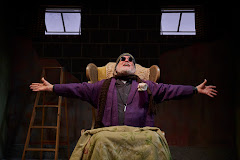





























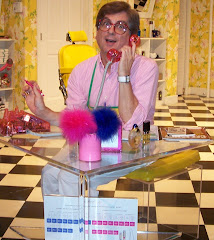

,+Olney+Theatre+Center,+2004.jpg)



,+Shakespeare+Theatre+Company,.jpg)
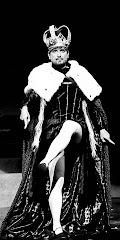

,+Warehouse+Theatre,+1999.jpg)
,+Are.jpg)
,+Everyman+Theatre,2002.jpg)
,+First+Nationa.jpg)
,+Shakespeare+Theatre+Company,.jpg)


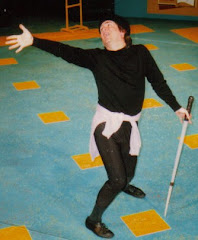
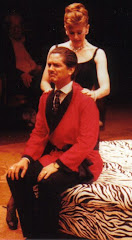
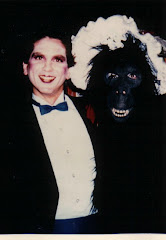
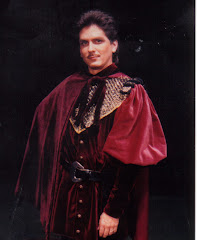
,+Granada+Th.jpg)
,+Globe+Playhouse,.jpg)
,+CSUN,+1976.jpg)
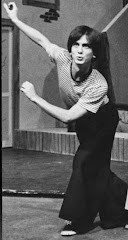


No comments:
Post a Comment